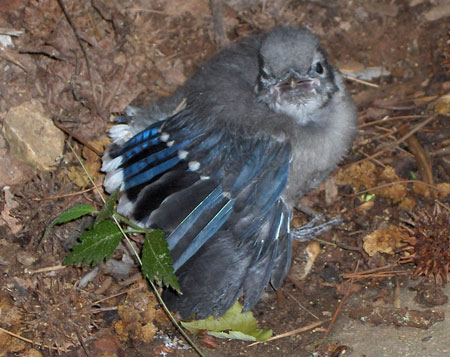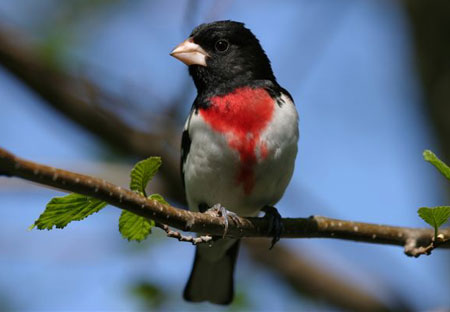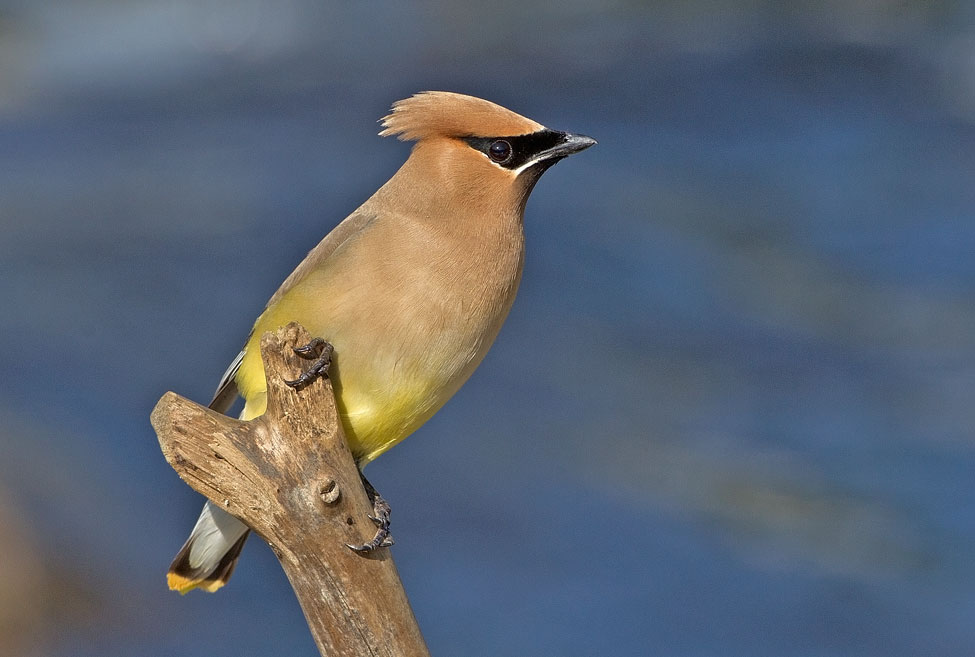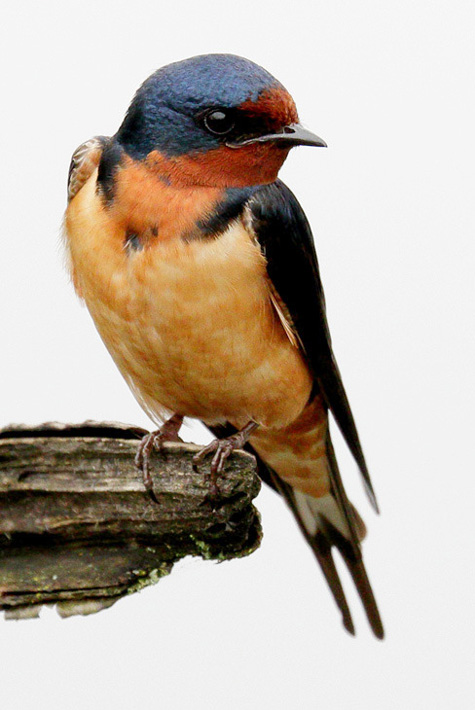Most of us start watching birds close to home, at a window or in our backyard. One more way to see more birds is to make your home and backyard more attractive to them. The key is to provide the basic necessities for birds: food, water, and shelter.
These are the most common questions we get at Surfbirds. Hopefully, these answers can help you but if not, click here for photos of common backyard birds that will help you put a name to your bird.
I have found a baby bird that cannot fly. What do I do?
It's not unusual to see a young robin crouched on the lawn or a young rabbit in the flower garden, both apparently motherless. Often, we step in to help. This is when problems arise; when we assume that young wildlife we find alone are abandoned, helpless and need saving. In nearly all cases, this is a mistake. Every year, many people upset the lives of young wildlife when they only mean to help. They take fledgling songbirds, young rabbits or other animals from the wild in a mistaken attempt to save them. LEAVE THEM ALONE. However, when you encounter a young wild animal that is obviously injured or orphaned, you may wish to call a Wildlife Rehabilitator for advice and help. See below for some more common questions about finding young birds.

A very small baby bird has fallen from its nest in a tree in my backyard. I am afraid something might happen to it if I leave it there on the ground. Should I bring it into the house and feed it until it is able to fly?
No. The best thing to do is put the bird carefully back into the nest (or the nest itself back into the tree). But, do this ONLY IF YOU CAN DO IT SAFELY. Don't worry about getting your scent on the bird. Also, some birds that appear to have fallen from the nest are actually recently fledged and are learning to fly. They will not stay in the nest.
There is a young blue jay in my backyard and it seems to be having difficulty flying. I am afraid that either my dog or cat will get it. Should I bring it inside and feed it until it is able to fly?
No. As a fledgling, it had enough feathers to leave the nest. This means it is old enough to learn to fly, which it will rapidly begin to do. Leave the bird alone, but you should keep your dog or cat in the house for a few hours so it won't disturb the bird.

The cat just caught and killed a mother bird. The baby birds are now obviously orphaned. Shouldn't I take them to a wildlife rehabilitator?
Most songbird young are cared for by both parents. If one of the parent birds is killed, the surviving adult can successfully raise the chicks. Even if you think both parents are dead, call the rehabilitator for advice before taking any direct action with the young birds.
Is it OK to keep feeding my birds during the summer?
Yes. Birds need feeders during the winter months to survive but even in the summer when food is easier to find, birds will appreciate easy sources of food as they need more food to feed their young. Many summer migrants also stop off at feeders on their migration north (from South America to Canada). Add some variety to the food you put out. Fruit such as orange slices hung on trees will attract orioles, catbirds and tanagers. See our page on Attracting Orioles. Dried currants soaked in water are also attractive to thrushes and bluebirds. Hummingbirds are easily attracted to sugar water. See our page on Attracting Hummingbirds for more information. Also consider putting out mealworms that will be particularly attractive to birds feeding youngsters.
I am worried about a bird that keeps flying in to our window. What is it doing?
During spring time, male birds can be very territorial and will chase off a rival that is on its turf. Your bird is seeing its reflection and thinking it is a rival male is trying to chase itself off. This may continue day after day unless you can break up the reflection. You can rub a bar of soap on the window or cover the window up from the outside. Once nesting is underway, the bird will soon have more pressing concerns and the behaviour will stop. Please look at our Birds and Windows page for more information and how to stop this behavior.

I live in a rural community. I have enjoyed feeding finches in my backyard for years. Last Spring some very beautiful goldfinches showed up for the first time at my feeder. Soon there were several of them feeding every day. One morning I found the neighbor's cat had killed a goldfinch. Since then I moved the feeder to a hanging area, where cats cannot get at it. The other finches continue to feed there, but there hasn't been a goldfinch since the day one was killed last year. The other finches are gray and brown tones. Is there a way to attract the goldfinches to return?
The gray and brown finches are House Finches. See if you can entice the Goldfinches back with Nyjer thistle. ![]() How to Attract Birds to your Backyard Nyjer (thistle) Nyjer is a high-calorie finch magnet. Imported from Africa and Asia, again it can be pricey. Doves and many native sparrows clean up the spillage from the tiny seed ports of finch feeders, which are designed to exclude larger birds. Contrary to its popular nickname, nyjer is not a thistle, It will not germinate and invade backyards and gardens. Nyjer is sterilized before it enters the USA. Read more here
How to Attract Birds to your Backyard Nyjer (thistle) Nyjer is a high-calorie finch magnet. Imported from Africa and Asia, again it can be pricey. Doves and many native sparrows clean up the spillage from the tiny seed ports of finch feeders, which are designed to exclude larger birds. Contrary to its popular nickname, nyjer is not a thistle, It will not germinate and invade backyards and gardens. Nyjer is sterilized before it enters the USA. Read more here
